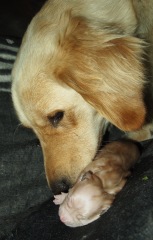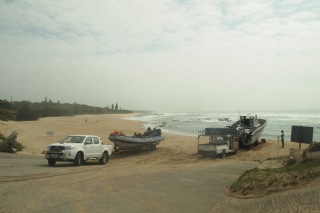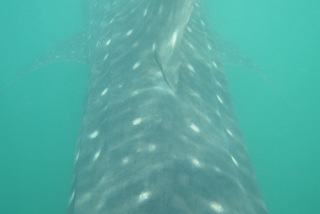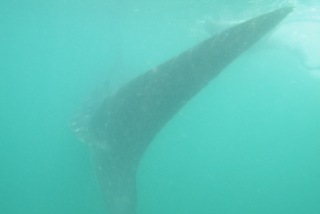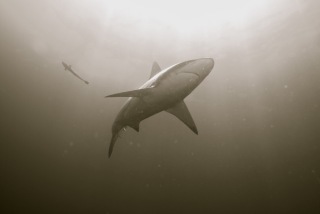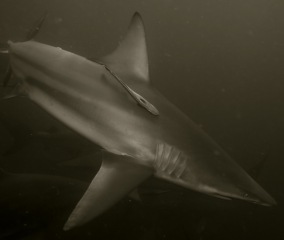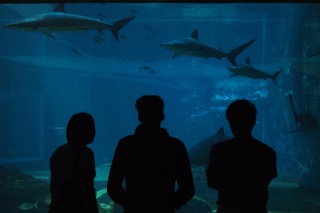After a week of courses in diving medicine I was off to Umkomaas, just outside of Durban, to visit Blue Wilderness. Blue Wilderness is a dive centre run by Mark and Gail Addison, but do not mistake it for your ordinary dive operator. They have an extensive cooperation with researchers and film crews, and while I was there they were supporting a project on genetic and photo ID of black tip reef sharks. The project is aimed to identify and follow individuals in order to learn more about their life cycles. Exciting stuff! But, my trip started with a sudden role as co-midwife. I have said it before and I say it again – there are no limits to what you can experience during your Scholarship year. At Mark and Gail´s house there was a heavily pregnant Golden Retriever, who found it convenient to have her puppies my second night there. Normally they manage themselves, but with some of the puppies we had to step up to save them from a rather sad destiny as newborns – and so I cut my first umbilical cord that very night. Jazzy, the proud mother, gave birth to 9 viable puppies, and here is the first one getting his first cuddle.
Blue Wilderness is situated in Rocky Bay, where they launch the boats from, and most of the diving in the area is concentrated on Aliwal Shoal.
Aliwal Shoal is not a true coral reef, but a calcified prehistoric sand dune. The calcification has enabled a few species of hard and soft corals, together with algae and seagrass to attach themselves, and that is the foundation for all the cool underwater life there. The Shoal is also declared a Marine Protected Area (MPA) by South Africas Environmental Ministry. The purpose is to limit user groups as fishermen and spearfishermen and to manage SCUBA divers on the reef by issuing a permit system and introducing a code of conduct for dive operators.
I went to South Africa during early Spring, which is not the best season for sea creatures. Still, the richness of this coast is mindblowing, even in the crappy season! In just one day at Aliwal Shoal I saw a hammerhead poking around at the surface, I snorkeled with a 6 m whale shark, saw a humpback whale calf breach, dived with 25 crazed black tip reef sharks and spotted a sea turtle on our way back. The coast of South Africa is so rich it is almost unreal. The country does have some issues they need to solve when it comes to preservation, and I can only pray that the government listen to the environmental organizations and act before it is too late. It would be a tragedy if we mess up the coast there. Snorkeling with the whale shark was one of my dreams come true. I was so caught up in the moment that I didn´t manage to get one good picture. The shark came up behind me, 30 cm below me, and I could swim with him/her for maybe 5 seconds. I couldn´t keep up, so I had to let him pass, and we were so close his tailfin punched me in my chest when I slowed down. It was unbelievable! Sadly, it was not until that moment I got my act together and turned the camera on, so these two pictures are the only ones I´ve got for you. When it comes to me, I´ll always have the memory to cherish.
The shark dives are very popular in Aliwal Shoal, and I understand why. My first dive I was completely surrounded of maybe 20 black tip reef sharks. Had I done this dive a couple of years ago I would probably have been seriously worried about not returning with all my limbs intact, but I have learnt so much about sea animals this year, and especially sharks, that all I did was enjoy myself.
All in all it was a fantastic stay, and I have never experienced such richness anywhere in the world. Mark and Gail at Blue Wilderness has achieved something very special with their extensive cooperation with researchers – linking the scientists with eager recreational divers and documentary film crews I think is a winning combination. The potential within all the groups is utilized and maximized in order to serve the greater cause – exploring, learning more about the environment and creating public awareness all at once.
The research interns – our future!
